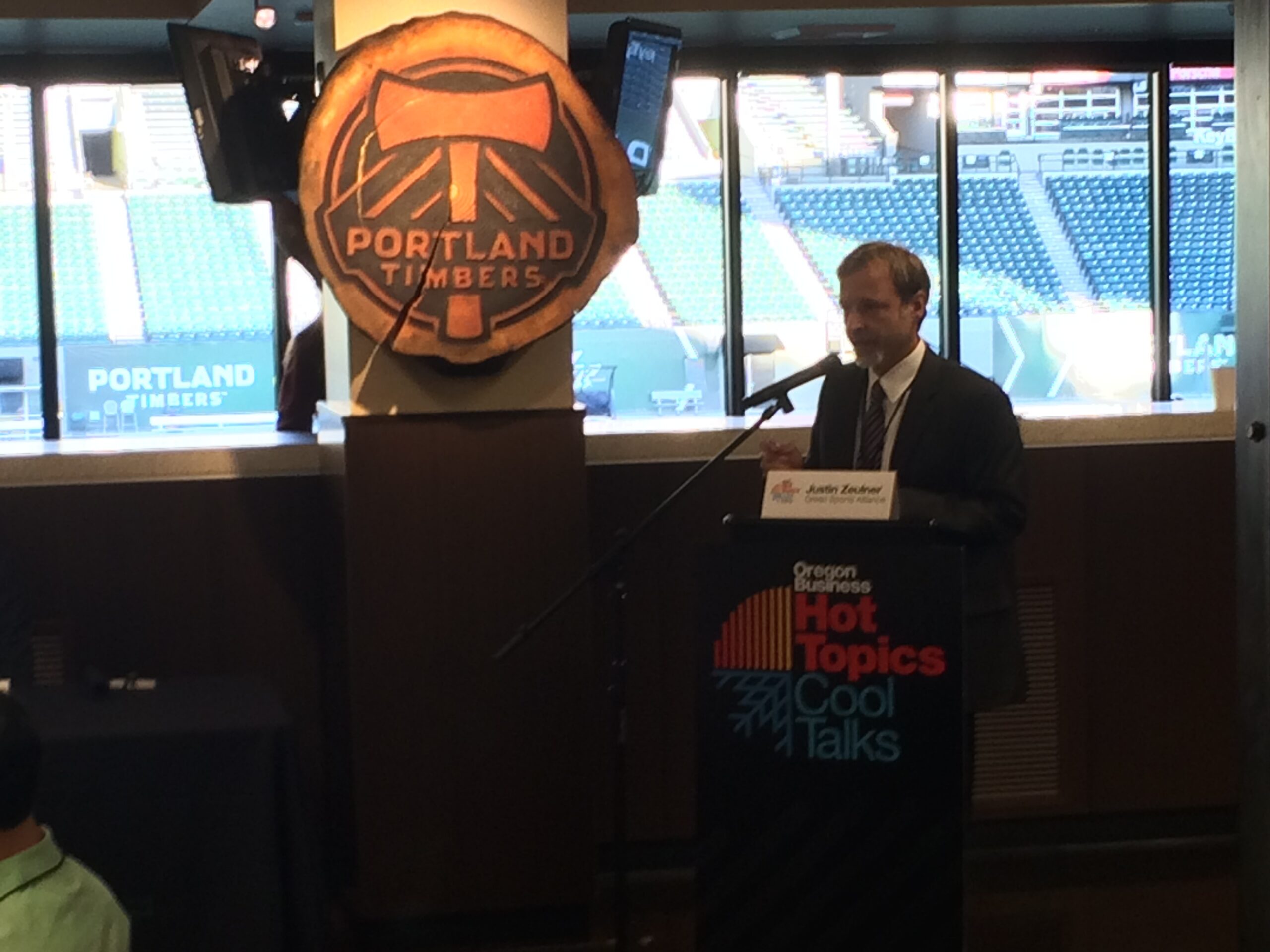The traditional model of sports teams using paid media to get their message across is disappearing as teams look instead to social media to interact with fans.
The traditional model of sports teams using paid media to get their message across is disappearing as teams look instead to social media to interact with fans.
At a breakfast meeting hosted Wednesday by Oregon Business magazine on Portland’s professional sports industry, representatives from basketball team Trail Blazers, and baseball team Hillsboro Hops, said they prefer to use social media, such as Twitter, to reach fans.
Chris McGowan, CEO of the Trail Blazers, said the company tries to launch products or make announcements on Twitter and Instagram because this is where people tend to get information as opposed to traditional paid media channels. The business trains players on how to use social media to make its brand outreach to fans more effective. “Every player has a favorite social media platform. It is a great way for players to interact with fans,” said McGowan.
K.L. Wombacher, general manager of the Hillsboro Hops, said his company does not rely on paid media to cover the team. Instead, it uses social media to try to bring fans behind the scenes of the business and communicate with players. The team has a lot of young players that gain followers every day through social media channels, he said. “We train them on what to say to fans,” said Wombacher.
The immediacy of social media also makes it possible to detect when fans are unhappy with an aspect of the business or a sports function, such as the food on offer at a game. Often the business can identify a fan that tweeted their discontent and speak to them before he or she leaves the venue and doesn’t come back, said Wombacher.
Part of the attraction of using social media is the access it gives teams to millenials, who make up a large portion of a sports teams’ fan base. This is especially the case with soccer, which is becoming more popular with children under 16 than baseball. “In part this is because [soccer] games are shorter. Their ability to sit down and watch baseball for three hours is a challenge,” said Mike Golub, president of business operations for the Portland Timbers soccer team.
But the Portland Timbers is careful to market to a broad fan base encompassing older fans that can afford to watch games from more expensive seats. “We need to be a broad-based brand. Our premium seats are driven by non-millenials,” said Golub.
The Trail Blazers targets millenials by offering discounts for young people. “What scares me the most is how to connect to young people. Our games are expensive. You have to see the benefit of discounting,” said McGowan.




